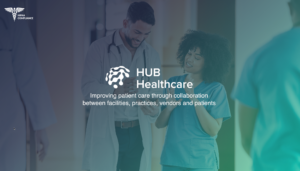Navigating CMS (Centers for Medicare & Medicaid Services) compliance can be daunting for healthcare administrators. Efficiently managing compliance workflows and documentation is essential for maintaining the integrity of healthcare services and avoiding penalties. HUB Healthcare provides a comprehensive platform that simplifies compliance management through automated processes, real-time monitoring, and robust reporting tools. This guide will help you master HUB for CMS compliance, ensuring your healthcare facility stays compliant with federal regulations.

Step-by-Step Guide to Using HUB for CMS Compliance
Step 1: Getting Acquainted with HUB’s Interface
Action: Log into your HUB account and navigate through the dashboard. Familiarize yourself with the layout, menu options, and key features, especially those related to compliance management.
- Benefit: Understanding the interface helps in navigating the platform efficiently and utilizing its full potential for compliance tasks.
Step 2: Setting Up Your HUB Account
Action: Complete the account setup by entering your organization’s details and configuring user roles and permissions according to your team’s structure and compliance responsibilities.
- Benefit: Proper setup ensures that all team members have appropriate access and responsibilities, enhancing security and accountability.
Step 3: Managing Documents
Action: Upload and categorize all compliance-related documents in the ‘Document Management’ section. Implement access controls to ensure data security and HIPAA compliance.
- Benefit: Organized document management facilitates easy retrieval during audits and ensures compliance with regulatory documentation requirements.
Step 4: Tracking Compliance Tasks
Action: Utilize the ‘Compliance Checklist’ feature to create and manage tasks for compliance activities. Set reminders for important deadlines to ensure timely completion.
- Benefit: Automating task management reduces the risk of missed deadlines and ensures all compliance activities are completed on time.
Step 5: Implementing Training Programs
Action: Access and assign HUB’s training modules tailored to CMS guidelines. Track staff completion to ensure everyone is informed about compliance requirements.
- Benefit: Regular training ensures that all staff are up-to-date with the latest compliance standards and best practices.
Step 6: Utilizing Reporting and Analytics
Action: Generate compliance reports and use HUB’s analytics tools for review. Assess these reports to identify areas for improvement in your compliance strategy.
- Benefit: Detailed reports and analytics provide insights into your compliance performance and help in making informed decisions to improve processes.
Step 7: Customizing and Integrating Systems
Action: Adjust HUB’s features to meet your facility’s specific needs. Integrate HUB with other operational systems for a more streamlined compliance process.
- Benefit: Customization and integration enhance the functionality of HUB, making it a central hub for all compliance-related activities.
Step 8: Accessing Support and Staying Updated
Action: Reach out to HUB’s customer support for assistance when needed. Regularly update yourself on new features in HUB that can aid in compliance management.
- Benefit: Continuous support and updates ensure that you are always using the most efficient tools and features for compliance.
Conclusion
By following this guide, healthcare administrators can effectively use HUB Healthcare for managing CMS compliance. Regular interaction with the platform and adherence to these steps will ensure a more efficient compliance management process. HUB Healthcare’s comprehensive tools and features make it easier to stay compliant with CMS regulations, thereby enhancing the overall quality of healthcare services.
How HUB Healthcare Can Help
HUB Healthcare offers a robust solution designed to streamline communication in healthcare, enhance care coordination, and improve overall workflow efficiency. The platform includes features such as medical case management software, healthcare document management, and healthcare analytics, which optimize all aspects of patient care. Leveraging HUB Healthcare’s tools helps organizations reduce workflow bottlenecks, automate repetitive tasks, and facilitate better collaboration among healthcare providers. This not only improves work quality but also enhances patient outcomes, making HUB Healthcare an essential partner in achieving healthcare excellence. Care coordination






